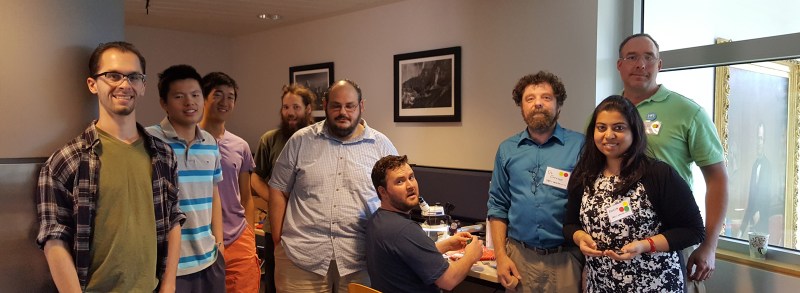If you are blind or your vision is impaired, moving around in a new space can be a harrowing experience. A cane helps, but only samples one point at a time, and can’t help that much above a certain height. The Digital White Cane is a haptic feedback device that uses Time of Flight components to detect surrounding objects.
The Digital White Cane uses a type of LIDAR known as Time of Flight (ToF) sensing. Rather than a point by point scan by a laser, ToF sensors capture an entire scene with each pulse. These sensors are actually somewhat new and designed for the latest generation of robotics and hand detection for soap dispensers. The good news is that they’re small and cheap, just what you want for a wearable.
The sensors allow detection of objects within 2m (about 6 feet) from all directions. Haptic feedback allows the wearer to determine where the object is around the wearer. Because it’s head-mounted, it detects objects at head height as well as floor height. A Teensy LC is used as the main processor and is connected to the ToF sensors as well as small motor board for the haptic feedback.
This project has a lot of potential to help people with vision impairment and is a great entry into the 2017 Hackaday Prize. Check out the video after the break to see it in action. If you’re looking for some more applications of this small, cheap ToF sensor, check out this cat food dispenser, and here’s a ball-balancing robot – both pretty cool projects in their own right.



















Have it also sense to the rear and have haptic feedback there too!
The first new feature our test user asked for was “make it so my grandchildren can’t sneak up on me.” So 360 degree sensing is on the radar, or in this case LIDAR.
On the topic of editorial decisions (and the next article): Seriously HaD? You are now going the way of the verge and engadget before it and destroy your website?
I guess it could be MAGA style philosophy creeping into the thinking of all of society.
But sure, dig on, it’s your choice.
You are not commenting on this article. Stay on topic.
You are not commenting on this article. Stay on topic.
Hi, I wanted to understand better how it works, I mean, ToF are like a laser so it decets only an obstacle in a single point, so how to detect an obstacle in the area where a blind person is walking?
Do you need to use a 3d camera with a pool of sensors, or a couple of servos to move up-down left-right the sensor
Thanks for the question. The ToF sensors have are detect things in a cone of about 25 degrees. The up and down scanning part is done by the wearer. Just like sighted people look around to see what is around them.